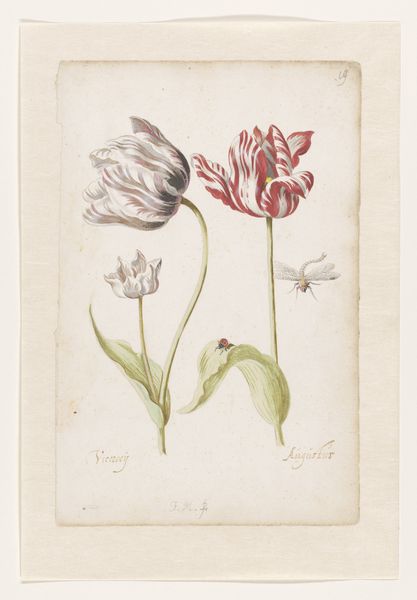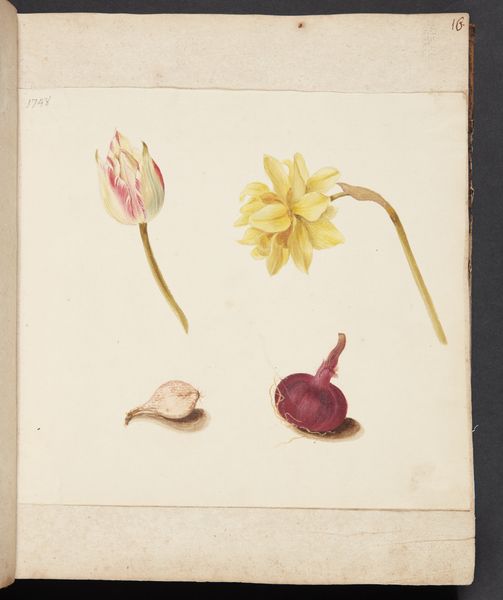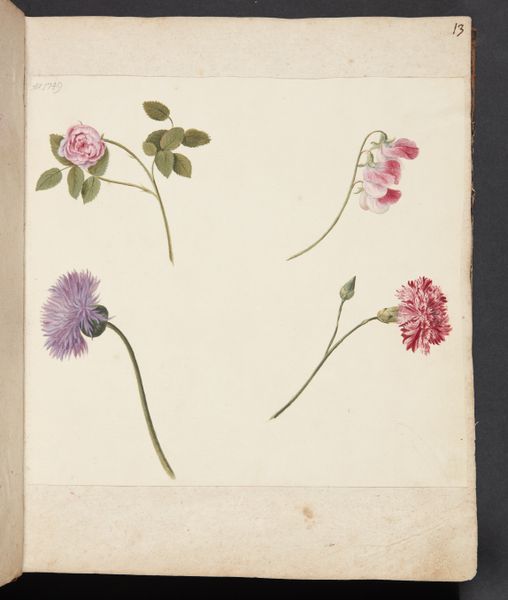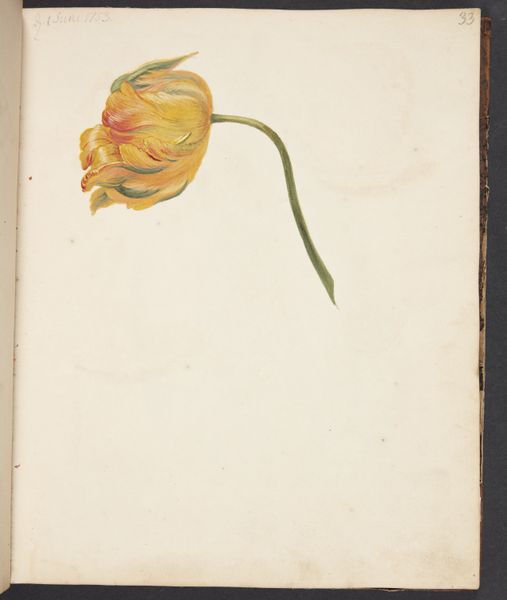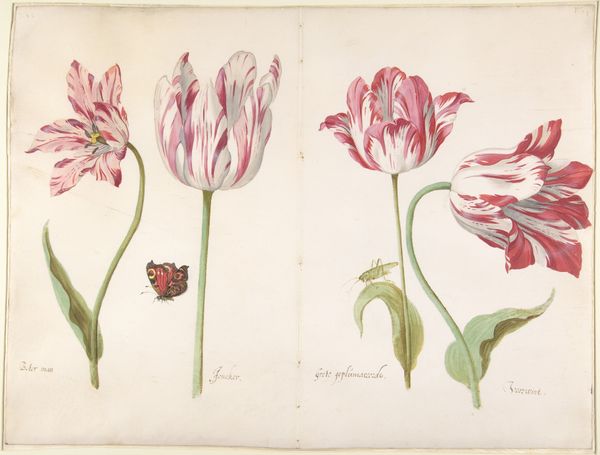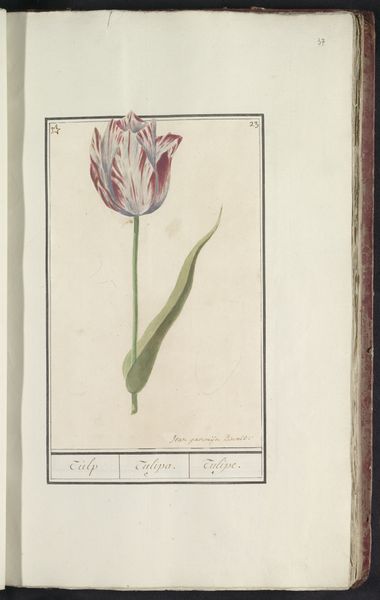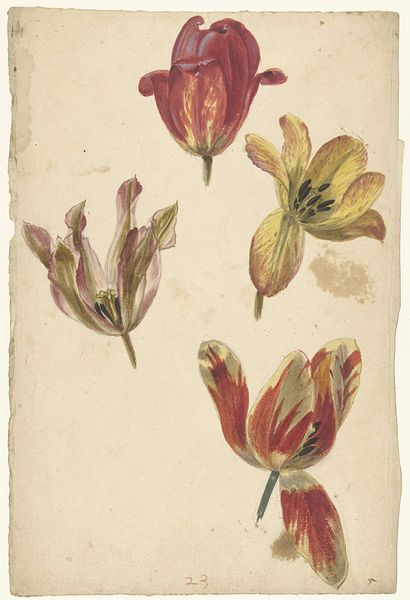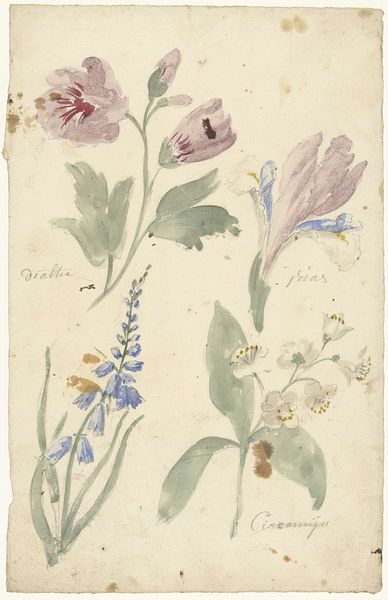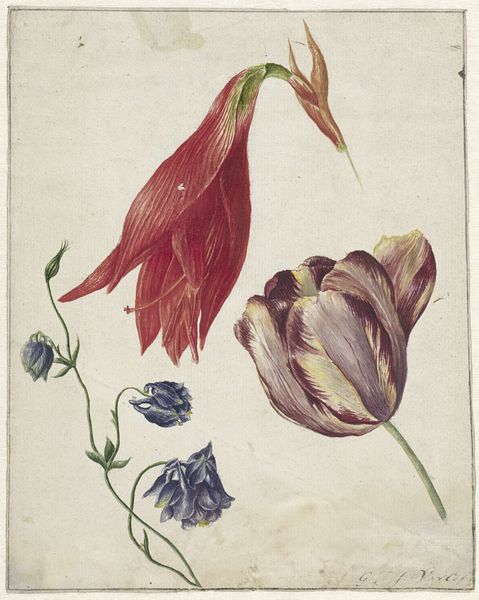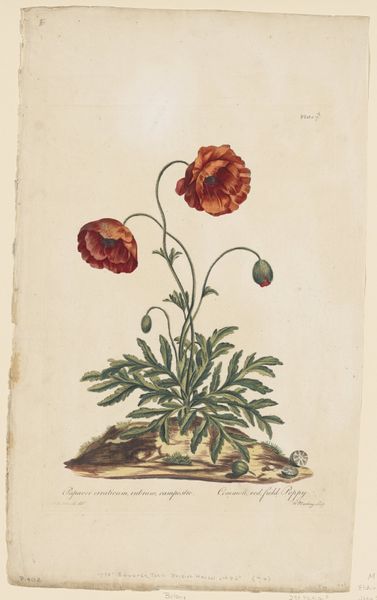
drawing, gouache
#
drawing
#
toned paper
#
water colours
#
ink paper printed
#
gouache
#
personal sketchbook
#
coloured pencil
#
sketchbook drawing
#
watercolour bleed
#
watercolour illustration
#
sketchbook art
#
watercolor
Dimensions: 281 mm (height) x 227 mm (width) (bladmaal)
Johanna Fosie made this watercolor and gouache study of a tulip and other flowers in the mid-18th century. At the time, such meticulous botanical studies were part of the Enlightenment's encyclopedic impulse, but flowers have always held deeper symbolism. The tulip, in particular, evokes a sense of fleeting beauty. Its popularity in 17th-century Holland led to "tulip mania," a speculative bubble reflecting the flower's allure and fragility. Think of the vanitas paintings of the same era, where flowers alongside skulls remind us of the transience of life and beauty. This motif has roots stretching back to ancient Greece and Rome, where garlands of flowers adorned tombs, symbolizing both mourning and the hope of renewal. The visual language of flowers persists through history, evolving but echoing earlier meanings, tapping into our collective memory and reminding us of the delicate balance between life and death. The continued appearance of floral motifs is evidence of our enduring quest to find beauty, meaning, and a connection to the natural world, as we see here in this intimate study.
Comments
No comments
Be the first to comment and join the conversation on the ultimate creative platform.
